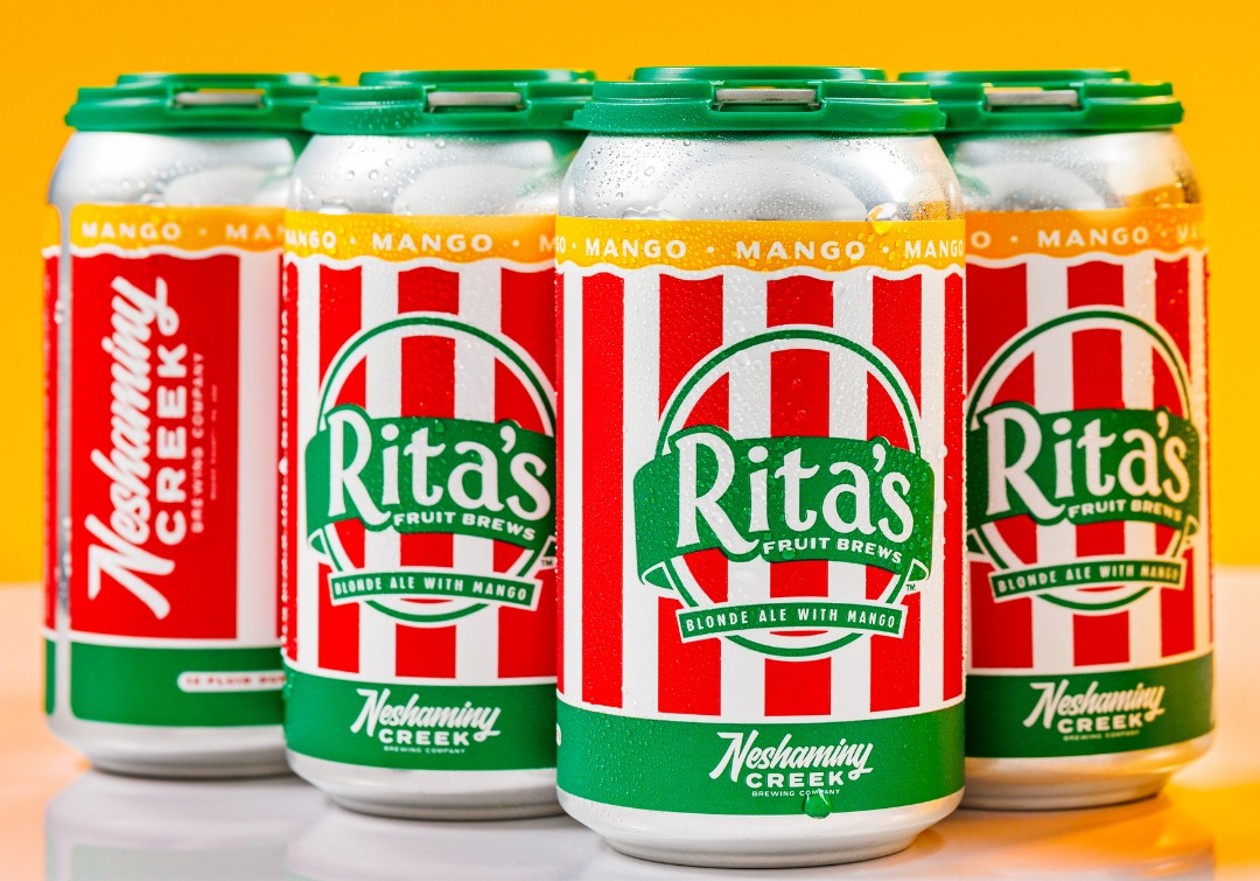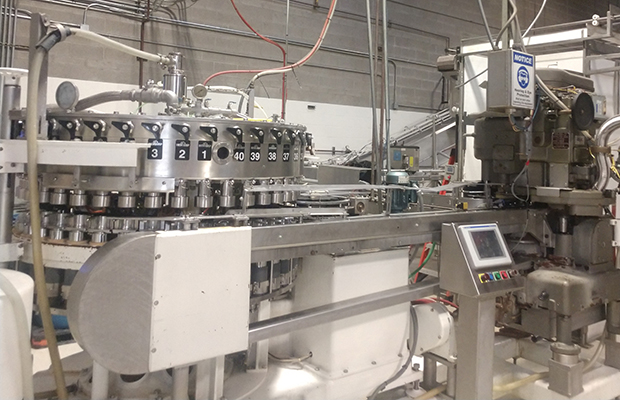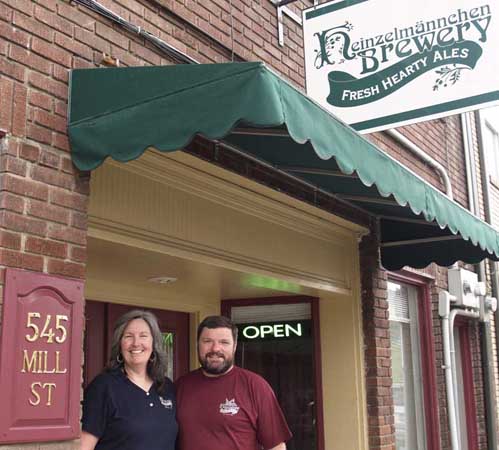
Neshaminy Creek Brewing went for an easy-drinking nostalgic beer for its spring release, which dropped earlier this month.
Rita’s Italian Ice is a staple in Pennsylvania where it started and now enjoys a wide audience, being sold in 30 states. Neshaminy Creek’s first iteration of Rita’s Fruit Brews is a Blond Ale with Mango.
Both Rita’s and Neshaminy Creek are based in Bucks County, Pennsylvania — north of Philadelphia — and share history. Rita’s first location opened in 1984, minutes from Neshaminy Creek’s production brewery and taproom.
Marketing and Sales Director Kyle Park said the idea originated during the pandemic when taking his family to Rita’s was “one of the few escapes from the monotony of working from home.”
Neshaminy Creek Chief Brewing Officer Rob Jahn said Neshaminy Creek created the Italian ice-inspired flavor with Rita’s to get the flavors right, and they accomplished the feat without the aid of any ingredients provided by the restaurant chain.
“We worked directly with Rita’s to find the proper combination of fruits to mirror what they did,” Jahn said, noting that best practices for fruit beers and novelty beers vary. “A lot of it depends on what you’re putting into the beer. Mango, for instance, is an easier fruit to deal with because it pairs really well with beer. Mango is really syrupy and dense and so it pairs really well with beer itself.”
The beer was brewed with 2-Row, white wheat, flaked oats, and hopped with Herkules and Chinook then conditioned on mangoes.The target audience is craft beer drinkers looking for something fresh in spring and summer and newcomers who like Rita’s.
“We wanted a fruit-forward beer, but at the end of the day we’re still making craft beer,” Jahn said. “Our base was Blonde Ale because it sets the stage well for anything you’d want to do on the fruit side. The white wheat and flaked oats give extra body to the beer and help make a solid base beer for the fruit to attach to.”
Avoiding accidental refermentation and no residual yeast was a key part of the process, Jahn noted.
“You want to have the sweetness that’s reminiscent of Rita’s, so you add products into the beer to make sure it stays healthy in the can,” he said. “We centrifuge our beer and deactivate the yeast, so the yeast in the beer itself should be very low to none. Between deactivating the yeast and centrifuging it we can make it a really clean beer when adding fruit to it. It’s part of the process of being consistent and making sure [refermentation] doesn’t happen.”




Be the first to comment